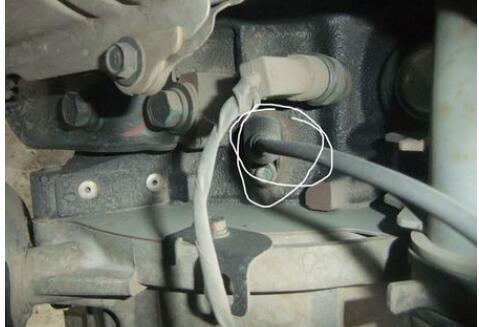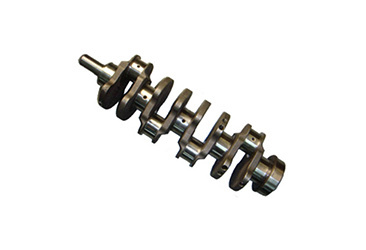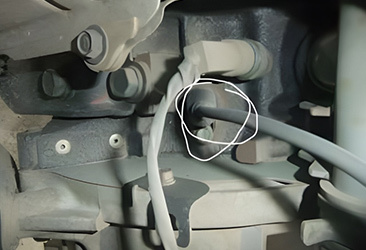Why does the crankshaft sensor fail? Troubleshooting the crankshaft sensor.
Release time:
2024-10-03
The crankshaft position sensor is one of the most important sensors in the electronic fuel injection engine control system, and it is also a shared sensor for the ignition system and the fuel injection system.
Why does the crankshaft sensor fail?
The crankshaft position sensor is one of the most important sensors in the electronic fuel injection engine control system, and it is also a shared sensor for the ignition system and fuel injection system. It can determine the position of the crankshaft, detect the piston top dead center signal and crankshaft angle signal, and transmit the detected signals to the ECU for controlling ignition timing and fuel injection timing. It can also detect engine speed. However, since sensors are precision instruments, they inevitably encounter problems or damage. So why does the crankshaft sensor fail? Let's understand it together.
Crankshaft sensor damage may be caused by improper installation. In addition, there are various forms of crankshaft position sensors; different vehicle models have different forms of crankshaft position sensors. Based on the principle of signal generation by the sensor, they can be divided into three types: magnetic induction type, photoelectric type, and Hall effect type. The failure causes vary among different types of sensors.
1. Magnetic induction type
The fault in a magnetic induction type crankshaft position sensor is that the engine cannot start. In this case, you should reconnect the wiring properly and readjust the distributor while checking ignition timing.
2. Hall effect type
The fault in a Hall effect type crankshaft position sensor is that the transmitted signal is not within normal range. In this case, check whether the permanent magnet, magnetic guide plate, and integrated circuit are functioning properly.
3. Photoelectric type
The fault in a photoelectric type crankshaft sensor is poor engine acceleration; it may stall automatically when starting and sometimes produce high-voltage sparks. The cause is poor performance of the ignition system leading to weak high-voltage spark. In this situation, check for issues with low-voltage circuits, main relays, internal short circuits in high-voltage ignition coils, faults in engine control units, and abnormal wear of some mechanical components.
When a crankshaft sensor fails, the engine fault light on the car dashboard will illuminate. The engine computer cannot receive signals from the crankshaft position sensor to confirm its angle; thus there will be no high voltage for starting or fuel injection. If there is an unstable signal from the crankshaft sensor, it may be due to poor contact or damage to the sensor which can lead to misjudgment; even if the engine starts, it cannot operate stably and may have difficulty accelerating requiring timely inspection or replacement.

Troubleshooting Crankshaft Sensor Failures
1. Troubleshooting Magnetic Pulse Type Crankshaft Sensors
A common fault with magnetic pulse type crankshaft sensors is that the engine cannot start. For this issue, first follow standard procedures to check whether each part (circuitry, fuel system, mechanical parts) of the engine functions normally; discovering late ignition as a true cause for failure to start. When resolving this issue reconnect wiring properly and readjust distributor while ensuring correct ignition timing.
2. Troubleshooting Photoelectric Type Crankshaft Sensors
A common fault with photoelectric type crankshaft sensors is poor generator acceleration; sometimes it stalls automatically during startup producing high-voltage sparks due to weak high-voltage spark caused by poor performance of ignition systems which should prompt checks on low-voltage circuits main relays internal short circuits in high-voltage ignition coils faults in engine control units as well as abnormal wear on some mechanical components.
3. Troubleshooting Hall Effect Type Crankshaft Sensors
Hall effect type crankshaft sensors control sequential fuel injection control ignition timing control and knock control; when faults occur signals transmitted are not within normal range causing failure to start which requires checking whether permanent magnets magnetic guide plates as well as integrated circuits function normally.
Latest News









